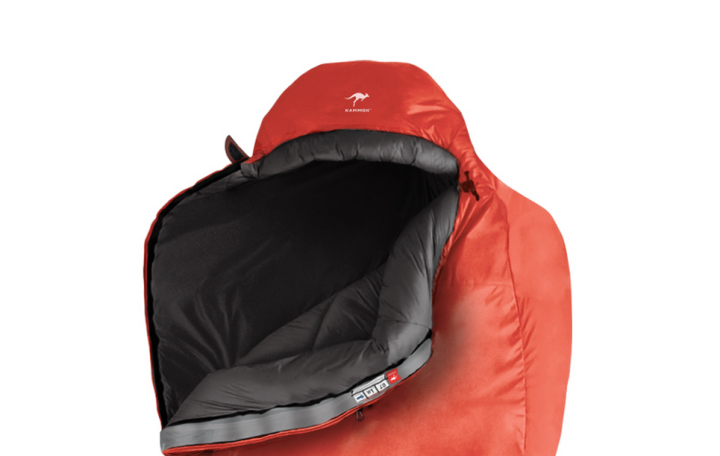
Sleeping bags are a tricky piece of gear to buy. Ideally you’d be able to buy just one and use it for every season, but unfortunately it doesn’t work like that.
Gear experts will generally recommend you buy a bag rated for the coldest weather you think you’ll encounter, which means if you camp in the colder seasons of the year, you need a bag rated for zero or sub-zero temperatures. If you get one with such a low temperature rating, however, it’s often far too toasty for fair-weather camping. On the flipside, if you get a sack rated for warm weather, it won’t be good for anything other than spring/summer trips. Up until now, the only solution to this problem was to buy two or more sleeping bags – one for cold weather and one for fair weather, and maybe even one in the middle if you can afford it. But now there’s a better solution.
Kammok, the gear manufacturer who popped onto the scene last year with the Roo backcountry hammock, has developed a modular sleeping bag system that allows the user to add or remove insulation depending on the level of warmth needed.
It starts with a shell designed with Kammok’s patent-pending “variable warmth technology,” which is basically a system pockets of designed to accommodate interchangeable baffles. Baffles are little pockets of insulation, and while they’re commonly used in traditional sleeping bags, the ability to remove and change them is an entirely new concept.
By stuffing Thylacine with different types of insulation (baffles can be filled with down, synthetic down, or a hybrid mix) and different fill levels, you can optimize the bag’s warmth and weight to best suit your needs. It also features a special locking system to keep the baffles properly positioned and prevent cold spots, and to help you manage extra fabric when the bag isn’t completely full, it’s even got a cinching system to ensure it’s always snug.
Kammok is currently raising money for it’s first large-scale production run on Kickstarter. Backer prices range from $200 for the most basic model, up to $650 for the most decked-out version with tons of extra baffles. Find out more on Kammok’s website.



